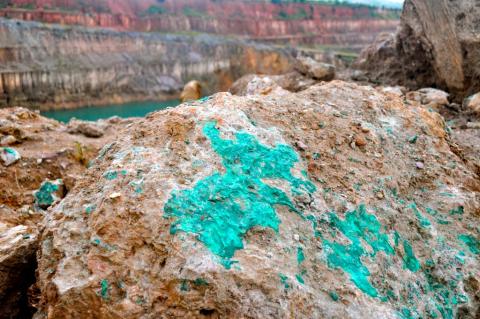
How effective is the EITI in Kyrgyz Republic?
How effective is the EITI in Kyrgyz Republic?
Some things never change: Gold, historically a sign of power and wealth, has for centuries been fought over and sometimes led to agitation. Like the two-faced Roman god Janus, gold can lead to conflict and prosperity. In Kyrgyzstan, we see how it can lead to both:
Our country is not known for having a vast amount of natural resources, but nevertheless the Kumtor goldmine is one of the largest gold mines in Central Asia. In 2012, taxes and other payments to the government exceeded US$300 million. Kumtor’s share of the total GDP in 2012 was 5,5% and its share in the total industrial output was 18,9%. However, recently Kyrgyzstan has witnessed several conflicts and protests against Centerra Gold Inc (a Canadian shareholder of Kumtor). This is a potential threat to current and future foreign investment in Kyrgyzstan.
The biggest conflict around the mine is taking place at the moment – contract terms that were agreed on in 1991 between the Kyrgyz government and Centerra Gold Inc have been renegotiated a number of times. The issue of renegotiating the contract terms is on the table every time the government changes.
The disruptive sequence of protests exacerbated the flow of discussion around Kumtor and the company. The company has often been portrayed as an outsider with little interest of improving the overall environment. However, this animosity against one particular company is not creating the stable investment climate, which is dearly needed to attract foreign investment into what could become the next Kumtor.
Transparency around Kyrgyzstan’s mining?
At the same time, Kyrgyzstan has promised to follow the international best-practice for mining transparency, called the EITI. It has been implementing the EITI for soon a decade, and has produced eight EITI reports. It has even been found to be EITI Compliant. But what does it mean to a regular Kyrgyz citizen? And has it made any progress since 2011 when it was designated Compliant?
There are no good answers to this yet. But EITI could be a useful place to have an enlightened and honest conversation about how Kyrgyzstan could manage its natural resources. It is not that place yet, but there are some seeds of hope. For example, according to the 2011 EITI Report, Kumtor Gold Company was the only company that made supplementary payments (around US $10m) to build and support Kyrgyzstan’s schools. Objective knowledge about how much companies are contributing to our society is necessary to have an informed debate about how we should manage our resources. To date, these findings have not been widely reported and discussed.
One could follow the payments to the government (not only in Kyrgyz Republic), which provides answers to many questions raised by the local population.
What should be done?
Policy makers need to sit down together with representatives from the mining companies and citizens and take a hard look at what the point is with an EITI if no one knows any more about the contributions from the mining sector in the country.
In 2013, the international Board of the EITI agreed a new version of the EITI Standard, with new focus on countries’ setting their own priorities. Kyrgyzstan’s EITI should see the opportunity to provide much needed objective knowledge into the complex discussion about the Kumtor mine, and what we can do to attract investment for the next Kumtor.
Related content



